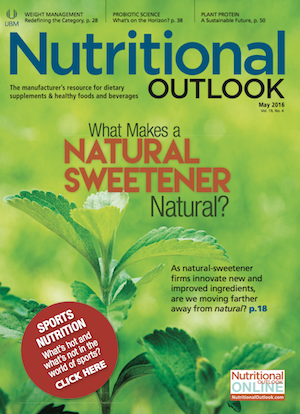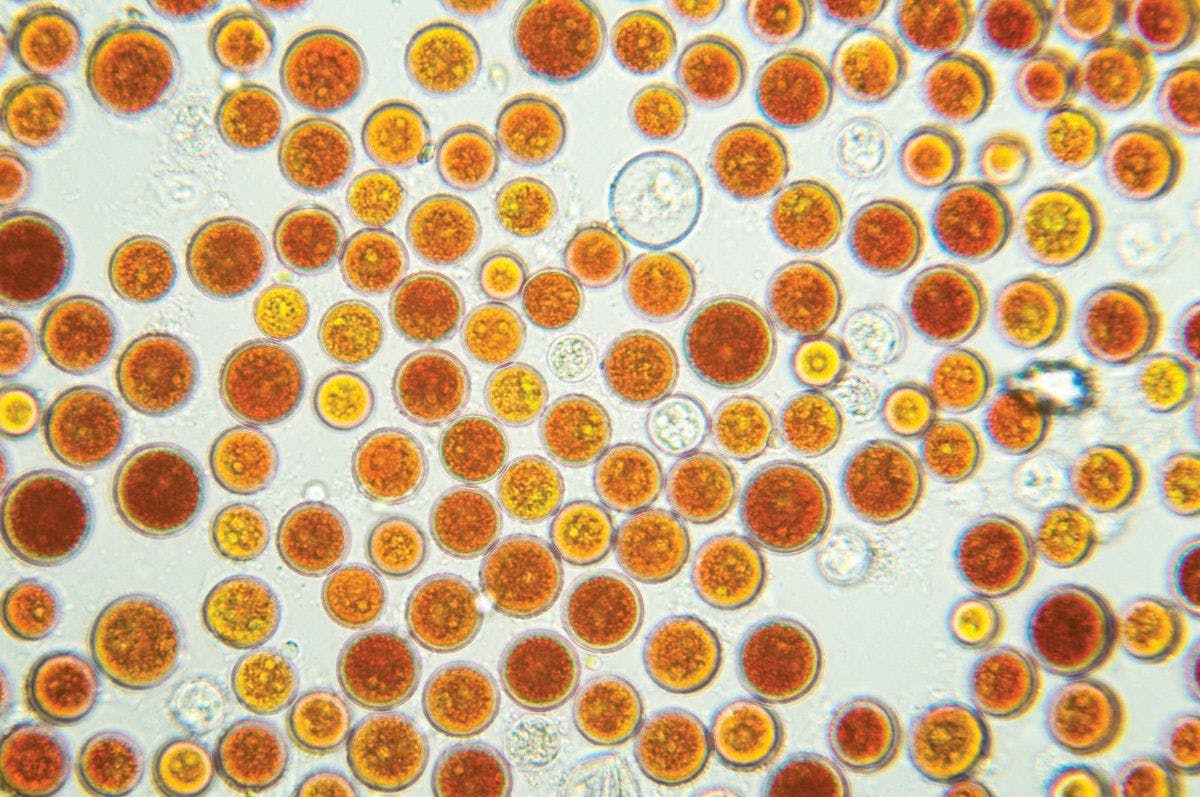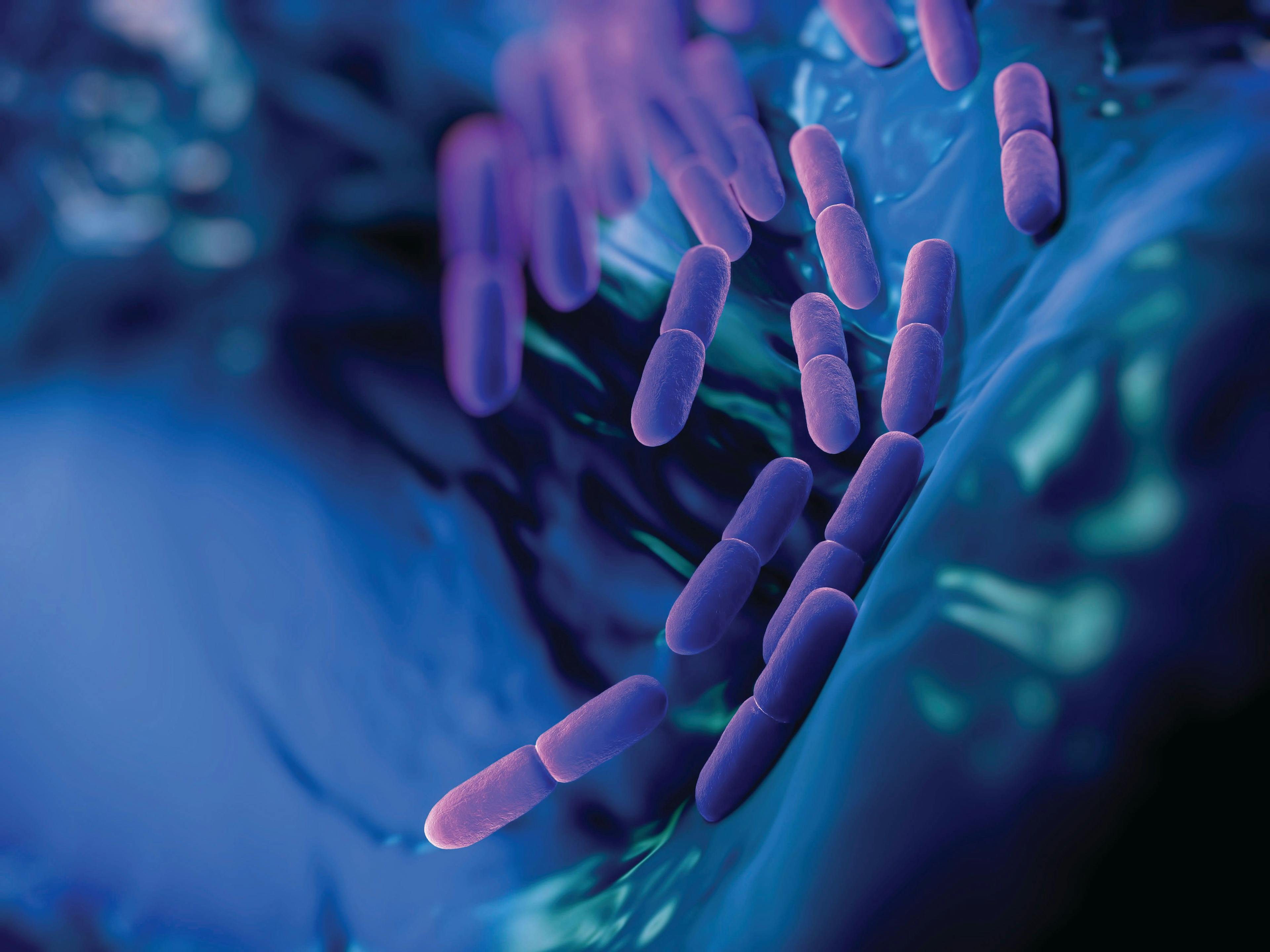Stevia and Monk Fruit: What Makes a Natural Sweetener Natural?
Do new technologies and blending practices mean stevia and monk fruit are moving away from their natural roots?
Photo © iStockphoto.com/Olivier le Moal

The stars are aligning for zero-calorie natural sweeteners stevia and luo han guo (or “monk fruit”). Sales of natural products show no sign of slowing. Scientific bodies and regulators, too, are pushing citizens toward healthier choices-ones that could benefit zero-calorie sweeteners big time.
Case in point: Here in the U.S., FDA’s recent proposal to specify added-sugar content on U.S. nutrition facts labels has manufacturers of zero-calorie natural sweeteners rejoicing because their sweeteners, unlike sugar and other nutritive sweeteners, add nothing to the caloric bottom line. And, for the first time, the 2015–2020 U.S. Dietary Guidelines for Americans set official sugar-intake targets to help Americans cut the added sugar.
But that’s not the end of the happy news for stevia and monk fruit. Breeding, processing, and formulating innovations are yielding new-generation uses of these plant-based sweeteners. If these advances gain market acceptance, it all points to a very lucrative future.
The Stars: Stevia and Monk Fruit
Stevia (Stevia rebaudiana) and monk fruit (Siraitia grosvenorii) are the two strongest sellers in the zero-calorie natural-sweeteners space-for now, at least. Both sweeteners check key boxes: zero calories, a natural plant source, commercial availability, and enough flexibility for formulators.
According to May 2015 Mintel estimates1, sales of products containing stevia in U.S. natural supermarkets (excluding Whole Foods Market) were $19.6 million in the 52 weeks ending February 22, 2015. Sales of products containing stevia blends clocked in at $17.7 million during the same period. That puts stevia’s share of the overall alternative-sweeteners market (in natural supermarkets) at 17%, and stevia blends’ at 15%. (Mintel also notes that some of these stevia products may be blends of artificial and natural sweeteners.)
Monk fruit’s share of the alternative-sweeteners market is smaller, sitting at 2.2% in natural supermarkets; monk fruit sales during that 2014–2015 period were $2.6 million in natural supermarkets. Monk fruit’s market share is smaller because monk fruit supply is smaller, making its cost in use higher compared to stevia’s.
“Monk fruit extract is just not as plentiful as stevia,” says Thom King, president of Steviva Ingredients (Portland, OR), which supplies both monk fruit– and stevia-based ingredients. “There are a smaller number of [monk fruit] orchards as well as extraction facilities compared to stevia.” Until this changes, he says, “monk fruit will still have challenges scaling up in comparison to stevia. Once this is in place, there will be greater supply, which will start driving down price.”
“It’s a lot more expensive to grow [monk fruit] than it is to grow leaves on a [stevia] shrub,” explains David Thorrold, general manager, sales and marketing, of Illinois-based monk fruit extract supplier Guilin GFS Monk Fruit Corp. Still, he adds, “there are no issues with scaling up monk fruit to meet projected demand.”
The fact of the matter for stevia and monk fruit is that these are the only two commercially available natural, zero-calorie, high-intensity sweeteners, says Chris Tower, president of monk fruit and stevia ingredients supplier Layn USA Inc. (Newport Beach, CA), a subsidiary of Guilin Layn Natural Ingredients. “I don’t see a third entity arriving onto the commercial scene within the near-term future,” he says, defining near-term as the next two to three years.
STORY CONTINUES ON PAGE 2
Natural-Sweetener Advancements
Even as sales grow, both stevia and monk fruit each have challenges that ingredient makers and agronomists are toiling to solve.
For monk fruit, the main challenge at present is the existing supply. As such, a lot of the innovation going on right now in the monk fruit industry focuses on scaling up. “We are continually innovating around our agronomy and our process to improve yields while building a sustainable monk fruit industry that ensures a fair return to our growers,” Thorrold says.
For Monk Fruit Corp., Thorrold says, future projects will involve increasing fruit quality and yields, and these will be done largely through traditional plant breeding and agriculture. “What we won’t be doing is any kind of genetic modification for either the fruit or synthetic production of mogrosides [the sweetening glycosides in monk fruit],” he says.
Many stevia suppliers are also sticking to this traditional approach. PureCircle (Chicago), for instance, has long credited the headway of its agronomy team in making the firm’s next-generation stevia ingredients possible. Specifically, the team focuses on breeding stevia plants with higher concentrations of desirable steviol glycosides. For instance, the company’s new Zeta ingredients “are the result of breakthrough advancements of our PureCircle Stevia Agronomy Program, which have enabled us to grow proprietary stevia varieties that contain over 20 times the amount of rare steviol glycosides versus other leaf available on the market,” says Faith Son, vice president, global marketing and innovation.
But while PureCircle and many other stevia suppliers swear a commitment to stevia ingredients solely extracted from the stevia leaf-just as the monk fruit suppliers I interviewed say their ingredients will continue to focus strictly on plant-derived extraction-some stevia firms are branching out into methods of stevia production that go beyond traditional agriculture.
As Nutritional Outlookreported years ago, stevia suppliers like Cargill (Minneapolis) and Stevia First (Yuba City, CA) are beginning to use fermentation as a means of producing rare, better-tasting steviol glycosides in a way that is more cost efficient, requires fewer resources and less land to produce, and is easier to scale up. By solely producing the best-tasting glycosides, fermentation sidesteps the need to grow a lot of stevia leaves to net the same quantities of those desirable glycosides.
Cargill, it seemed, was closest to bringing commercialized, fermentation-derived stevia to market. Just this March, the company finally made its long-anticipated EverSweet fermentation-derived sweetener available for sampling, containing the steviol glycosides Reb M and Reb D. As Scott Fabro, global business development manager, Cargill, says, “EverSweet sweetener is an expansion, not a replacement, of Cargill’s steviol glycoside portfolio; it is meant to open new market opportunities where stevia leaf extract does not play today.” Importantly, he stresses, “We will continue to offer our Truvia and ViaTech stevia leaf extracts as they are made from the stevia leaf.”
Cargill has not definitively indicated when it expects to see EverSweet on market shelves. News from the company, however, hints that the firm is not quite ready to go commercial. This April, Fabro told Nutritional Outlook, “As for the official rollout of EverSweet, we are waiting to commercialize because production costs are currently above where we want them to be for a launch. This is a result of a combination of factors, including strain characteristic, fermentation and downstream processing costs, facility conversion costs, production scale, and current consumer indications on pricing. However, our work is actively continuing and has been accelerated to ensure this delay is as short as possible.” He points out that EverSweet does have self-affirmed Generally Recognized as Safe (GRAS) standing and that the company has also submitted its GRAS notification to FDA in order to seek a no-objections letter.
Fermentation versus Enzymatic Production
When we talk about fermentation (such as Cargill uses) and enzymatic production (another process that ingredient makers use), PureCircle’s Son reminds readers that “fermentation derived” and “enzymatically derived” are different processes. “The two are not the same,” she says.
Several of the stevia and monk fruit firms interviewed for this article confirm they have used some kind of enzymatic process in order to improve the flavor profile of their ingredients.
PureCircle is one of those companies. “Within our portfolio, we also have leaf-based ingredients that are glycosylated,” Son says. “These ingredients start with a traditional stevia leaf extract that’s purified to 95%, and with the use of natural enzymes, add glucose or other sugar molecules to improve taste.”
“We are very transparent about how these products are made and how they differ from our other leaf-based products,” she adds.
Steviva’s King says monk fruit suppliers are also doing the same. “There are some enzymatically treated monk fruit extracts making their way to the market that have been able to reduce some of the perceived off-notes,” he says.
Fermentation-derived stevia involves a different kind of technique because it may not begin with leaf-derived stevia materials. Cargill’s Fabro describes the “age-old process of fermentation” by which EverSweet is made: “Reb M and Reb D are the best-tasting steviol glycosides found in the stevia leaf, but they make up less than 1% of the actual leaf. By adding a few genes to baker’s yeast, we enable the yeast to produce the same type of enzymes used by stevia plants. We feed our yeast some simple sugars, and the yeast transforms the simple sugar into the very sweetest steviol glycosides, identical to what is found in the stevia plant. The yeast is then filtered away, and the remaining sweet steviol glycosides are concentrated and purified. These sweet steviol glycosides are identical to Reb M and Reb D that are naturally formed in very small quantities in the stevia leaf.”
Fabro underlines that Cargill remains transparent in conveying how EverSweet-“and, in fact, all our products”-is produced, including clear statements on the company’s website.
STORY CONTINUES ON PAGE 3
Is It Natural?
The farther away we get from sweeteners that are traditionally extracted from the plant, and the more we advance into enzymatic and fermentation processing, some questions come to mind. First, however, it’s important to remember that, in exchange, we are getting some better-tasting, more affordable-and perhaps environmentally sustainable-sweeteners. It’s not possible to ignore the obvious benefits sweeteners like Cargill’s EverSweet propose. The need to provide the world with easily scalable, safe, effective, and affordable low- and zero-calorie sweeteners is undeniable, especially as growing populations struggle with serious health conditions stemming from high sugar intake. It’s also a fact that our planet’s resources are limited and that there is a great need for sustainable production of not only sweeteners but all food ingredients for humans and animals.
But in moving to fermentation and enzymatic production techniques, are we also moving farther away from sweeteners that are considered natural? Talk about naturalness does matter because there is a growing subset of consumers specifically seeking sweeteners that are natural. In its aforementioned “Sugar and Alternative Sweeteners US 2015” report1 on approximately 1800 adults, Mintel found that 61% of those customers surveyed wished there were more natural sugar substitutes available; moreover, 18% said they would be willing to pay a premium for natural sweeteners, in the following breakdown: Millennials (25%), Generation X (17%), Baby Boomers (11%), and older customers aged 70-plus (9%).
Do processes like fermentation and enzymatic treatment still produce a natural ingredient? It depends on who you ask. Some of those interviewed say that stevia, when derived via fermentation, for instance, is no longer natural. Others ponder more complicated issues.
“The question of GMO comes into play any time enzymes and fermentation are employed, and as more legislation pops up regarding GMO, it slows the market penetration of these enzymatically treated glycosides,” says Steviva’s King. When asked if enzymatically enhanced stevia ingredients would be considered natural, he says, “In some cases, yes. It would depend on the enzymes being used.”
The opinion of Monk Fruit Corp.’s Thorrold is this: “As soon as you synthesize mogroside by enzymatic production, you have a food additive that is not monk fruit and is not natural.”
He continues, “While there might be a place for synthetic mogroside in the future as a food additive to replace aspartame or sucralose, we don’t see this replacing the demand for our natural, fruit-derived ingredient.”
PureCircle’s Son wonders how fermentation-derived stevia would list on ingredient labels compared to leaf-derived stevia, which currently labels as “stevia leaf extract.” “As for how fermentation-derived products are positioned and labeled, that is not entirely clear,” she says. “What we do know is that only products that come from the stevia leaf can be described as ‘stevia leaf extract.’ Logic would say that any ingredient referred to as ‘stevia’ should be from the stevia plant. There’s even a question as to whether products from yeast via fermentation even warrant being called ‘steviol glycosides,’ as the root of the word steviol is stevia.”
According to Cargill’s Fabro, EverSweet would label in the United States as “steviol glycosides” or as “Reb M and Reb D.”
What about Blends?
Another point of contention is whether stevia and monk fruit’s combination with other sweeteners still renders the resulting sweeteners natural.
Stevia and monk fruit extracts are commonly blended with other sweeteners for many reasons. Blending high-intensity natural sweeteners like stevia and monk fruit with other sweeteners is a way to balance off-notes. Also, by using other low-intensity or bulking sweeteners, manufacturers are able to build back the volume that food formulators need that’s otherwise lost with high-intensity sweeteners like stevia and monk fruit. Finally, using blends offsets the cost of higher-priced sweeteners.
The zero-calorie sugar alcohol erythritol is very commonly paired with stevia and monk fruit because of its ideal sugar-like taste and texture, as well as its easy digestibility. Cargill’s market-leading Truvia tabletop sweetener, for instance, is a blend of stevia leaf extract, erythritol, and natural flavors. And on monk fruit’s pairing with erythritol, Layn USA’s Tower explains, “erythritol is more water soluble and thus provides a quicker sweetness onset, which can minimize the relative delayed onset of monk fruit.”
A bulking sweetener like erythritol, however, may not always be considered natural, as it, too, is generally most often produced via fermentation. When combined with sweeteners like stevia and monk fruit, which are considered natural, what, then, is a manufacturer left with?
“There is a great debate over whether erythritol can be considered natural,” says Mel Jackson, PhD, vice president of science for leaf-based stevia supplier Sweet Green Fields (Bellingham, WA). “Until the FDA makes a definitive statement on the issue [on the definition of natural], this will continue to be a point of contention around microbial-derived products such as erythritol.” For what it’s worth, just 3% of consumers Mintel surveyed considered erythritol natural.1 (In U.S. news related to erythritol and natural labeling, Cargill recently announced that the Flavor and Extract Manufacturers Association recently granted GRAS status to Cargill’s Zerose erythritol when used as a flavor in non-alcoholic beverages. When Zerose is used as a flavor modifier at levels of 1.25% or lower, companies can label Zerose simply as a “natural flavor.” This rule does not, however, apply to Zerose’s use as a tabletop sweetener or at levels higher than 1.25%-for instance, as a bulk sweetener.)
Numerous food-industry lawsuits have centered on questions over whether some sweeteners on the market can be marketed simply as “stevia” or “monk fruit,” both of which carry natural connotations, if they are blended with other, questionably natural ingredients. Examples include lawsuits over Johnson & Johnson’s Nectresse monk fruit–based sweetener (containing erythritol), and Merisant’s PureVia stevia sweetener (containing PureCircle stevia as well as isomaltulose or dextrose). Cargill has also faced class actions for Truvia on similar grounds.
The question of erythritol’s naturalness is far from settled. Steviva’s King, whose company sells a blended stevia, monk fruit, and erythritol ingredient called MonkSweet+, says, “We are aware of these lawsuits, but erythritol is considered natural. It is derived from the natural fermentation of glucose. We have not run into any issues with our natural claims nor the natural claims of our customers.” Moreover, he says, the company is “very clear about the exact blend of glycosides and polyols that are being used.”
Meanwhile, says Monk Fruit Corp.’s Thorrold, “The bar is definitely being raised all the time for what consumers consider natural. There are consumers who don’t consider a product natural if it contains sugar alcohols, and also some consumers-for example, in Germany-who have claimed that stevia extracts cannot be considered natural because they are highly purified substances made up of nearly 100% single chemical compound. To answer your question, yes, some consumers are concerned that not just sweeteners but food and beverages generally are being labeled ‘natural’ when they contain some ingredients that the consumer doesn’t consider natural.”
STORY CONTINUES ON PAGE 4
Natural: Does It Matter?
FDA, as we know, has yet to assign a regulatory definition to the word natural. (Read more here.) Until that day, it’s the consumer who will decide what’s natural or not-and what’s acceptable for purchase. But do consumers know enough about natural sweeteners to come to a verdict?
Mintel’s aforementioned report1 on sweetener alternatives was revealing. In particular, it unveiled a key finding-that consumers have trouble telling which sweeteners are natural to begin with. Mintel asked consumers which sugar substitutes they considered to be natural. While many selected agave (34%)-followed by coconut sugar (31%), stevia (29%), and then monk fruit (17%)-a full quarter of those surveyed did not consider any of the sugar substitutes on Mintel’s proposed list to be natural, including agave, coconut sugar, stevia, monk fruit, high-fructose corn syrup, sucralose, erythritol, aspartame, xylitol, sorbitol, mannitol, saccharin, etc.
“This aligns with the general concern that it is difficult to know which substitutes are natural and which are not,” Mintel stated. Two-thirds of those Mintel surveyed “agree[d] there are so many types of sweeteners, it’s hard to know the difference between them,” and 65% said it’s difficult to tell which sugar substitutes are natural and which are not. What’s more, 60% said they wished they knew more about how sugar substitutes are made.
If fermentation-derived stevia does go commercial, there’s a good chance, based on industry interviews, that leaf-based-stevia suppliers will try to distance themselves from fermentation-based stevia. If consumers question the naturalness of next-generation stevia ingredients such as those produced through fermentation, suppliers not using those techniques may begin to compete on the message that leaf-derived products are inherently plant-based-and, therefore, more natural. It’s happening already.
“Our consumer insights and experience tell us that consumers love the fact that stevia comes from a leaf and is sustainable and beneficial to farmers around the world,” says PureCircle’s Son. “This is the foundation of what makes stevia desirable as a zero-calorie sweetener. Fermentation-derived products use genetically modified yeast without the use of stevia plants, which is quite a different approach.”
There is also some worry about preserving the net impression of stevia as a natural ingredient. Speaking as a leaf-based supplier, Sweet Green Fields’ Jackson says, “If the stevia industry does not go to great pains to show why leaf-derived stevia should be considered natural, then yes, the ‘natural’ stevia industry would be in peril” altogether, she says.
Monk fruit suppliers have an easier story to tell, says Monk Fruit Corp.’s Thorrold, because “monk fruit has been consumed for hundreds of years as a very simple ingredient that requires no special processing-just hot water and a sieve-and this makes its natural credentials very strong.” But he agrees that when it comes to natural sweeteners, “it’s very important that the natural claim continues to resonate with consumers.”
As more options come on line, food and beverage manufacturers will have their chance to weigh the choices. Cargill’s Fabro says, “Our customers, ultimately, will decide how they will label their products for their consumer.”
For now, any concerns about the naturalness of the stevia and monk fruit ingredients on the market haven’t been significant enough to keep consumers from buying these natural sweeteners. Stevia and monk fruit are on the way up, and still for the same reasons: As Fabro says, “Stevia and monk fruit are currently the most commercially successful plant-based, zero-calorie sweeteners, and both have a positive image with consumers.”
Also from this Issue:
Stevia versus Monk Fruit: How Do They Compare in Formulation?
What Will FDA Define as a “Natural” Sweetener?
Also read:
Will Consumers Still Be Sweet on Stevia If Stevia’s Not “Natural”?
Soft Drinks Responsible for One-Fifth of Stevia Market
PureCircle's Reb M Stevia Getting Beverage-Use Patent
Coconut Sugar Is the Fastest-Growing Natural Sweetener in the U.S.
References:
- “Sugar and Alternative Sweeteners US 2015.” Mintel Group Ltd. May 2015. http://store.mintel.com/sugar-and-alternative-sweeteners-us-may-2015

Prinova acquires Aplinova to further increase its footprint in Latin America
April 7th 2025Prinova has recently announced the acquisition of Brazilian ingredients distributor Aplinova, which is a provider of specialty ingredients for a range of market segments that include food, beverage, supplements, and personal care.
HHS announces restructuring plans to consolidate divisions and downsize workforce
Published: March 27th 2025 | Updated: March 27th 2025According to the announcement, the restructuring will save taxpayers $1.8 billion per year by reducing the workforce by 10,000 full-time employees and consolidating the department’s 28 divisions into 15 new divisions.
























